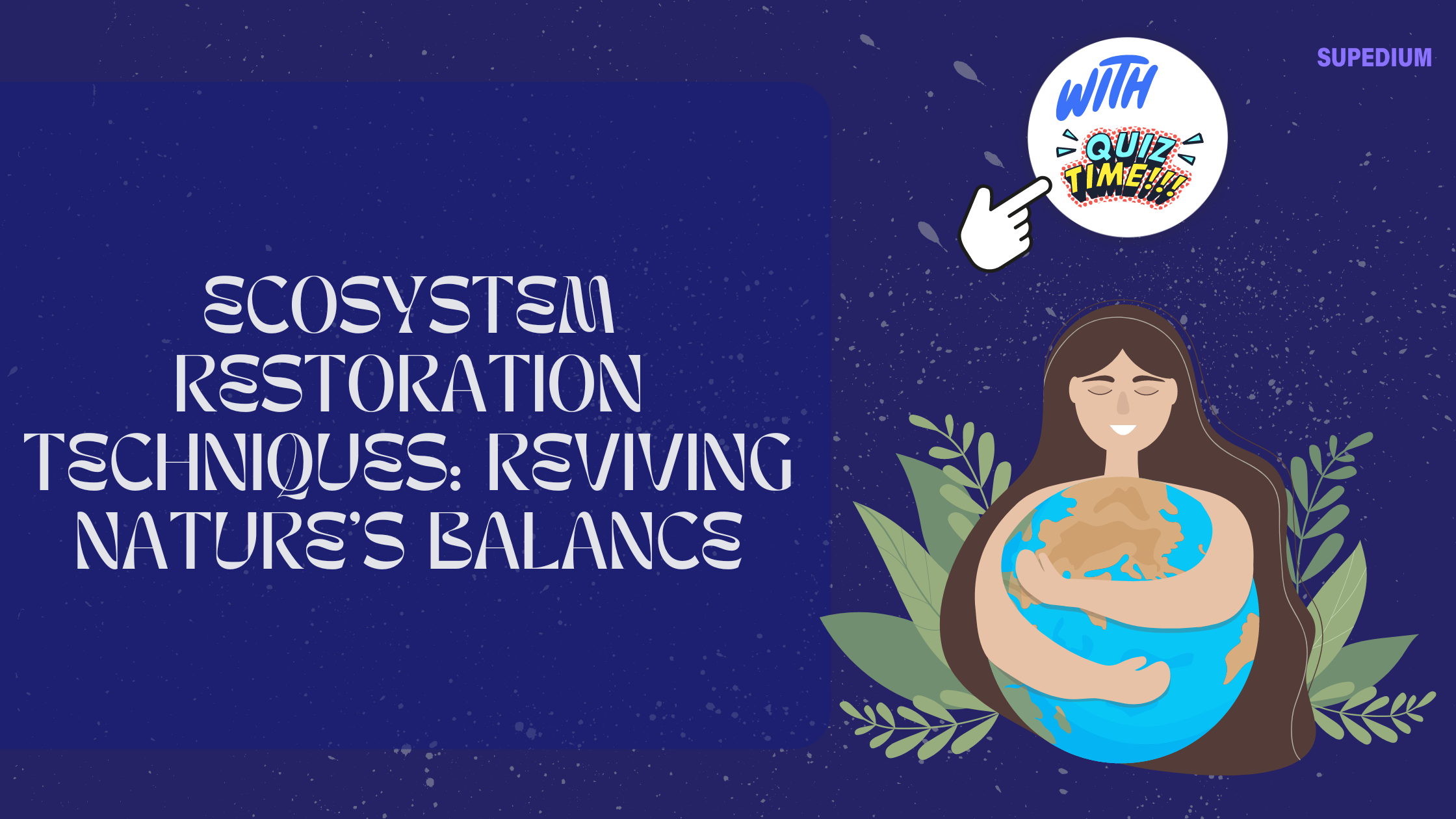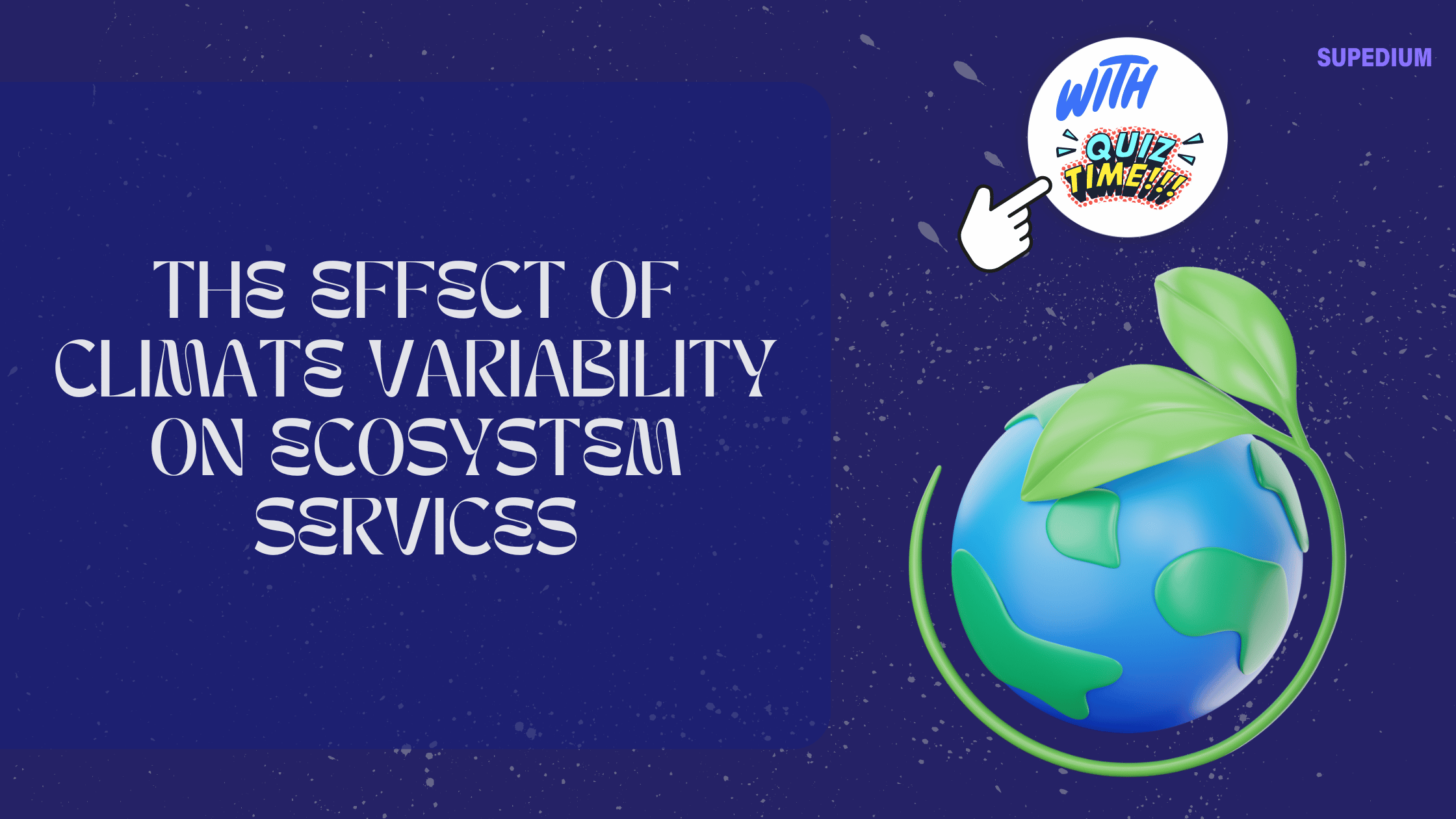Table of Contents
![]()
Introduction
Ecosystem restoration is a critical process aimed at reversing the degradation of natural environments and reestablishing their ecological functions and biodiversity. This practice not only enhances the health and stability of ecosystems but also contributes to climate change mitigation, water purification, and other vital ecosystem services. Understanding and applying various restoration techniques are essential for achieving these objectives and ensuring a sustainable future.
Types of Ecosystem Restoration Techniques
Ecosystem restoration can be approached through several techniques, each tailored to address specific types of environmental degradation. These techniques can be broadly categorized into rehabilitation, reclamation, reforestation and afforestation, wetland restoration, and riparian zone restoration.
- RehabilitationRehabilitation focuses on improving the functionality of an ecosystem without necessarily returning it to its original state. Techniques employed in rehabilitation include:
- Removing Invasive Species: Invasive species often outcompete native flora and fauna. Removing these species helps restore balance and allows native species to thrive.
- Reintroducing Native Species: Reintroduction of species that were once native to the area can help restore ecological interactions and functions.
- Soil Decontamination: Techniques such as bioremediation and soil washing are used to remove contaminants from soil, improving its health and suitability for native species.
- ReclamationReclamation involves restoring ecosystems that have been severely altered or degraded, often by human activities. Techniques include:
- Reclamation of Mined Lands: After mining operations, areas are often left barren. Reclamation can involve regrading the land, adding soil amendments, and planting vegetation to restore ecological function.
- Conversion of Industrial Sites: Former industrial sites can be rehabilitated through soil treatment, removal of hazardous materials, and establishing green spaces.
- Reforestation and AfforestationBoth reforestation and afforestation aim to increase forest cover, but they differ slightly:
- Tree Planting: This is the primary method for both reforestation and afforestation. It involves planting native tree species to restore forest ecosystems.
- Soil Preparation and Management: Ensuring that soil conditions are conducive to tree growth, including addressing soil erosion and nutrient deficiencies.
- Monitoring and Maintenance: Regular monitoring helps ensure the planted trees are growing well and allows for the implementation of corrective actions if needed.
- Wetland RestorationWetlands are critical for water purification, flood control, and habitat provision. Techniques for wetland restoration include:
- Re-establishing Hydrology: Restoring natural water flow patterns and reintroducing water sources to revitalize wetland areas.
- Planting Native Wetland Vegetation: Reintroducing plants that are native to the wetland helps in stabilizing the ecosystem and supporting local wildlife.
- Removing Barriers to Water Flow: Dams and other structures can impede natural water movement. Removing or modifying these barriers helps restore the wetland’s natural functions.
- Riparian Zone RestorationRiparian zones, or areas along waterways, play a crucial role in ecosystem health. Restoration techniques include:
- Stabilizing Riverbanks: Planting vegetation and installing erosion control measures to prevent soil erosion and bank collapse.
- Planting Riparian Vegetation: Introducing native plants to improve habitat quality and water filtration.
- Reducing Erosion and Runoff: Implementing practices that minimize soil erosion and reduce surface runoff into water bodies.
Restoration Planning and Design
Successful ecosystem restoration requires careful planning and design. This involves several key steps:
- Assessment of DegradationIdentifying the causes and extent of ecosystem degradation is crucial. This assessment helps in understanding the specific needs of the restoration project and planning appropriate interventions.
- Setting Restoration GoalsClear, achievable goals should be established for both short-term and long-term outcomes. These goals may include increasing species diversity, improving habitat structure, or restoring ecosystem functions.
- Site Selection and PreparationChoosing the right site and preparing it for restoration activities involves evaluating environmental conditions and implementing necessary modifications to support successful restoration.
Techniques and Tools for Ecosystem Restoration
A variety of techniques and tools are employed in ecosystem restoration:
- Biological Techniques
- Species Reintroduction: Bringing back native species that have been lost or diminished.
- Habitat Enhancement: Modifying habitats to improve conditions for native species.
- Controlled Burns: Using fire to manage plant communities and reduce the buildup of organic matter.
- Mechanical Techniques
- Soil Tilling and Grading: Adjusting soil conditions to improve plant growth and water infiltration.
- Removing Debris and Structures: Clearing out non-native structures and debris that hinder ecological recovery.
- Erosion Control Structures: Installing barriers or plantings to prevent soil erosion.
- Chemical Techniques
- Soil Amendment: Adding nutrients or other substances to improve soil health.
- Pest and Weed Control: Using chemicals or biological agents to manage invasive species and pests.
- Pollution Treatment: Addressing chemical contamination through various treatment methods.
- Ecological Engineering
- Constructed Wetlands: Creating artificial wetlands to treat wastewater and support biodiversity.
- Green Infrastructure: Implementing features such as green roofs and permeable pavements to manage stormwater and enhance urban ecosystems.
- Bioengineering for Slope Stabilization: Using plants and other natural materials to stabilize slopes and prevent erosion.
Monitoring and Maintenance
Ongoing monitoring and maintenance are essential for the success of restoration projects:
- Monitoring Techniques
- Field Surveys: Regularly assessing the condition of restored areas through physical inspections.
- Remote Sensing: Using satellite or aerial imagery to monitor changes in land cover and ecosystem health.
- Data Analysis: Evaluating monitoring data to assess progress and identify issues.
- Adaptive ManagementAdapting restoration strategies based on monitoring results ensures continuous improvement. This involves making adjustments to address emerging challenges and optimizing restoration outcomes.
- Long-term MaintenanceSustaining the benefits of restoration requires ongoing management, including controlling invasive species, maintaining infrastructure, and engaging local communities.
Case Studies
Examining real-world examples of ecosystem restoration provides valuable insights:
- Successful Restoration Projects
- Amazon Rainforest: Efforts to reforest and protect the Amazon have led to improved biodiversity and ecosystem health.
- Great Barrier Reef: Coral restoration projects have aimed to combat coral bleaching and enhance reef resilience.
- Challenges and Failures
- Limited Success Cases: Some projects face challenges due to unforeseen environmental changes or insufficient planning.
- Factors Contributing to Failure: Issues such as inadequate funding, lack of community involvement, and persistent pollution can undermine restoration efforts.
Policy and Legislation
Effective ecosystem restoration is supported by policies and legislation:
- International Agreements and Frameworks
- Convention on Biological Diversity (CBD): An international treaty aimed at conserving biodiversity and promoting sustainable use of natural resources.
- UN Decade on Ecosystem Restoration: A global initiative to restore ecosystems and halt biodiversity loss.
- National and Local Policies
- Restoration Policies and Funding: Government policies and funding programs that support restoration projects and research.
- Role of Governmental and Non-Governmental Organizations: Collaboration between various organizations to implement and support restoration efforts.
Future Directions
Looking ahead, several innovative approaches and integrations are emerging:
- Innovative Techniques
- Emerging Technologies: Advances in technology, such as drone monitoring and genetic tools, are enhancing restoration practices.
- Genetic Engineering and Synthetic Biology: These fields offer potential for developing new methods to restore degraded ecosystems.
- Integration with Other Environmental Goals
- Synergies with Climate Change Mitigation: Restoration projects can contribute to climate change goals by sequestering carbon and enhancing ecosystem resilience.
- Integration with Sustainable Development Goals (SDGs): Ecosystem restoration supports multiple SDGs, including those related to clean water, sustainable cities, and life on land.
Conclusion
Ecosystem restoration is a vital endeavor for maintaining the health and functionality of our natural environments. By employing a range of techniques and adopting effective planning, monitoring, and maintenance practices, we can reverse environmental degradation and enhance ecological resilience. Continued innovation and collaboration among stakeholders are essential for achieving long-term success and ensuring a sustainable future for ecosystems and human communities alike.






Be the first to comment